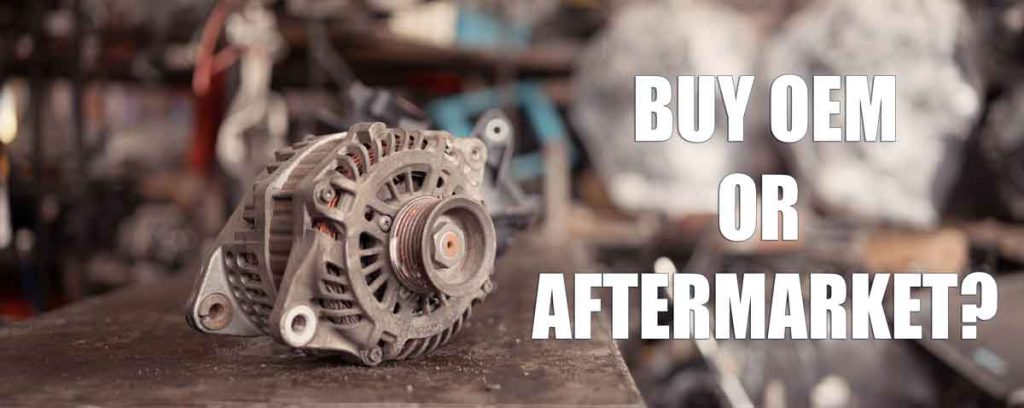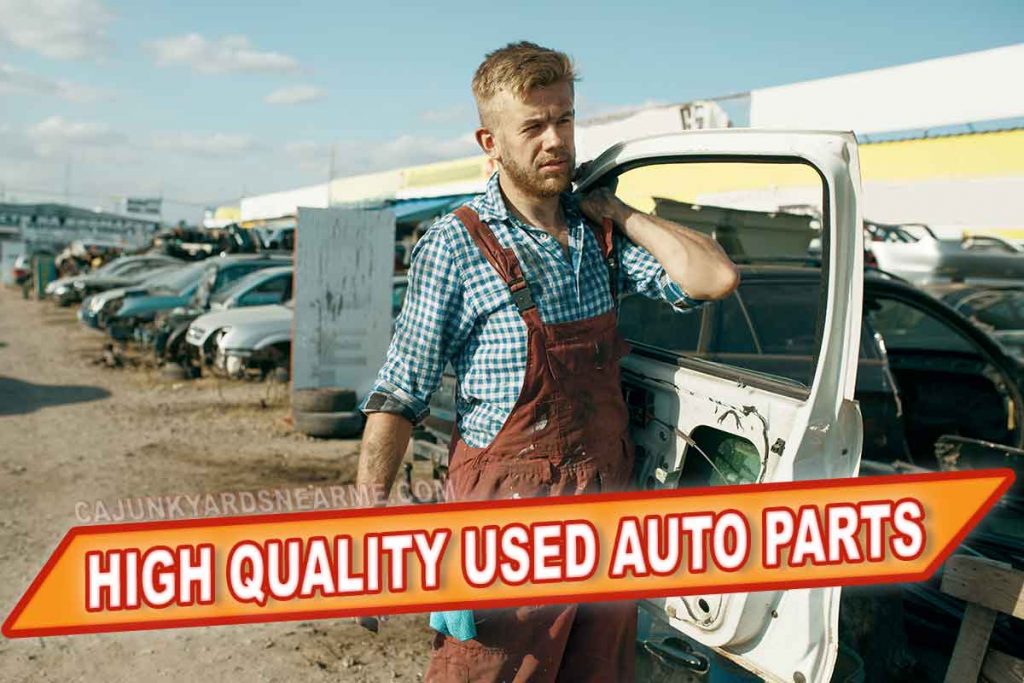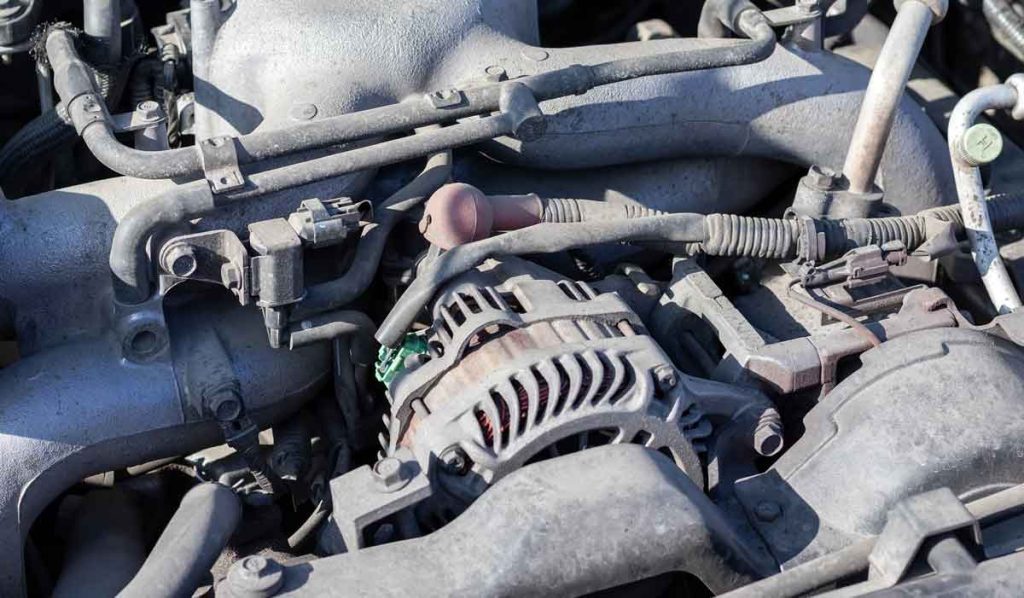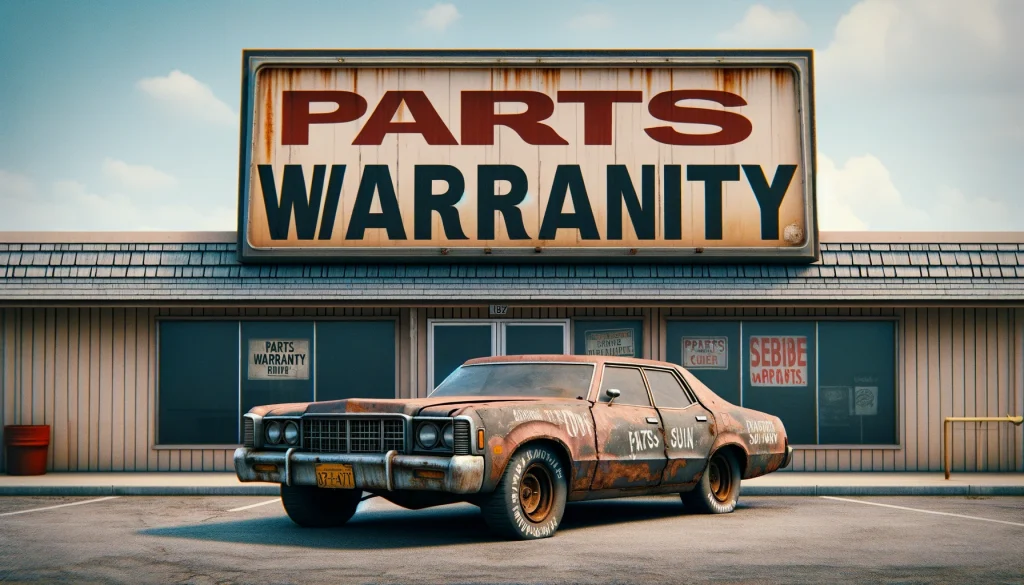In the world of automobile maintenance and repair, questions about using aftermarket and Original Equipment Manufacturer (OEM) auto parts versus factory products is a persistent service debate. Each type offers its own set of advantages and challenges, influencing a vehicle’s performance, cost of repair, and even its resale value. This comprehensive comparison aims to shed light on the key differences, compatibility issues, and factors car owners should consider when choosing between aftermarket and OEM auto parts, addressing questions regarding product quality and factory standards.
Understanding these distinctions is crucial for any car owner, mechanic, or enthusiast. It determines not only the performance and reliability of a vehicle but also impacts the warranty and the overall value. Whether it’s a simple replacement or a major overhaul, the choice of parts can significantly affect the long-term outcomes for your vehicle.
Understanding the Difference Between OEM and Aftermarket Parts
The automotive world is often divided into two main categories of parts: aftermarket and OEM (Original Equipment Manufacturer). Understanding the distinction between these two types is crucial for car owners and mechanics alike.
- Aftermarket Parts: These are manufactured by companies other than the original vehicle manufacturer. They are often less expensive than OEM parts and are widely available, offering a broader range of options for consumers. However, their compatibility with certain car models can vary, and quality may differ between manufacturers.
- OEM Parts: These are made by the original vehicle manufacturer. They guarantee a perfect fit and are specifically designed for the model of your vehicle. Although typically more expensive, OEM parts tend to offer higher quality and come with a warranty, providing peace of mind to the vehicle owner.
Exploring the Cost Differences Between OEM and Aftermarket Parts
One of the most crucial considerations when choosing auto parts is the cost. OEM (Original Equipment Manufacturer) parts and aftermarket parts differ significantly in pricing. Understanding these differences can help car owners make cost-effective decisions while ensuring quality and compatibility.
OEM parts are typically more expensive as they are made by the original manufacturer of the vehicle. They offer guaranteed compatibility and often come with a warranty. Aftermarket parts, produced by different manufacturers, are generally less expensive and provide a broader range of options. However, their compatibility and quality can vary.
Price Comparison: OEM vs Aftermarket Parts
| Auto Part Type | OEM Price | Aftermarket Price | Junkyard OEM Price |
|---|---|---|---|
| Brake Pads | $120 | $70 | $50 |
| Alternator | $250 | $150 | $100 |
| Radiator | $300 | $180 | $120 |
Note: Prices are illustrative and may vary based on brand, vehicle model, and region.
This table provides a snapshot of how prices can differ across these categories. While OEM parts are generally more expensive, purchasing them from a junkyard can offer significant savings, often providing the same quality at a lower price.

The Role of Junkyards in Economical OEM Part Sourcing
Junkyards or salvage yards offer a cost-effective alternative for sourcing OEM parts. Here, you can find used OEM parts at significantly reduced prices, sometimes saving up to 90% compared to new parts. This option is particularly beneficial for car owners looking for quality parts on a budget.
When choosing between OEM and aftermarket parts, consider both the short-term and long-term financial implications. While aftermarket parts may seem like a more affordable option initially, OEM parts, especially sourced from junkyards, can offer better long-term value.
Evaluating the Compatibility of Aftermarket Parts
When considering aftermarket parts, compatibility is a significant factor. Unlike OEM parts, which are guaranteed to fit and function as intended, aftermarket parts may not always align perfectly with your vehicle’s specifications. This can lead to potential issues in performance and even safety.
- Quality Variations: Aftermarket parts vary in quality. Some may match or even exceed OEM standards, while others might fall short. It’s essential to research and choose reputable aftermarket brands to ensure reliability.
- Cost-Effectiveness: One of the primary reasons for choosing aftermarket parts is their cost-effectiveness. They are typically less expensive than OEM parts, making them a popular choice for those looking to save on repair costs.
The Pros and Cons of Using OEM Auto Parts
When it comes to maintaining and repairing vehicles, OEM (Original Equipment Manufacturer) parts represent a significant segment. These parts are made by the car’s original manufacturer, ensuring a perfect match and integration with the vehicle.
- Pros of OEM Parts:
- Guaranteed Compatibility: OEM parts are designed specifically for your vehicle model, ensuring a seamless fit and function.
- Quality Assurance: These parts typically undergo rigorous testing to ensure high quality and reliability.
- Warranty Coverage: OEM parts usually come with a warranty, offering peace of mind and protection for your investment.
- Cons of OEM Parts:
- Higher Cost: They are often more expensive than aftermarket alternatives, potentially increasing repair costs.
- Limited Availability: Sometimes, these parts may not be as readily available as aftermarket parts, leading to longer wait times for repairs.

How OEM Parts Impact Car Performance
OEM parts are manufactured to meet the exact specifications of your vehicle, which plays a critical role in maintaining the vehicle’s performance. Using these parts ensures that the vehicle operates as intended by the manufacturer, preserving its integrity and performance levels.
- Maintaining Manufacturer Standards: By using OEM parts, you ensure that your vehicle remains true to the original design and performance standards set by the manufacturer.
- Longevity and Durability: These parts are often more durable and long-lasting, potentially reducing the need for frequent replacements.
The Role of Aftermarket Parts in Auto Repair
The use of aftermarket parts in auto repair has become increasingly common, offering a viable alternative to OEM parts. Aftermarket parts are produced by companies other than the original manufacturer and can vary significantly in terms of quality and compatibility.
- Wide Availability: Aftermarket parts are often more readily available than OEM parts, providing more options for consumers.
- Cost-Effective: They typically cost less, making them an attractive option for those looking to save on repair costs.
- Quality Spectrum: While some aftermarket parts are of high quality, others may not meet the standards of OEM parts. Familiarity with reputable aftermarket brands is crucial.
Aftermarket Parts: Quality and Cost Considerations
Choosing aftermarket parts involves balancing cost and quality. While they offer cost savings, it’s essential to consider the quality and compatibility of these parts with your vehicle.
- Quality Variations: The quality of aftermarket parts can range from inferior to superior compared to OEM parts. It’s important to research and select parts from established aftermarket manufacturers.
- Compatibility Issues: Not all aftermarket parts will fit or function as well as OEM parts. Ensuring compatibility is key to avoid future problems.
Choosing Between OEM and Aftermarket Parts for Your Vehicle
Making the right choice between OEM and aftermarket parts is crucial for vehicle maintenance and performance. Each option has its own set of advantages that cater to different needs and preferences.
- OEM Parts: Ideal for those who want parts that are guaranteed to fit and function as the original manufacturer intended. While they may cost more, their quality and compatibility with your vehicle are assured.
- Aftermarket Parts: A viable option for those looking to save on cost without significantly compromising on quality. Many aftermarket parts are comparable to OEM parts in terms of performance and durability.
Factors to Consider When Selecting Auto Parts
When choosing auto parts, several factors need to be taken into account:
- Cost: Aftermarket parts usually offer a more cost-effective solution compared to OEM parts.
- Quality: While some aftermarket parts may offer comparable quality to OEM parts, this can vary widely between manufacturers.
- Availability: Aftermarket parts are often more readily available than OEM parts, which might be on backorder or only available through specific dealerships.
- Source: Junkyards and salvage yards can be excellent sources for OEM auto parts at discounted prices. These parts can offer the quality assurance of OEM with the cost benefits of aftermarket parts.
Insights into the Manufacturing of OEM and Aftermarket Parts
The manufacturing processes of OEM and aftermarket parts differ significantly, impacting their quality and compatibility with specific car models.
- OEM Manufacturing: These parts are produced by the original vehicle manufacturer or its authorized suppliers, ensuring they match the exact specifications of the vehicle.
- Aftermarket Manufacturing: Aftermarket parts are produced by different companies and may not have the same stringent quality controls as OEM parts. However, many reputable aftermarket companies produce parts that meet or exceed OEM specifications.
The Quality Standards in Auto Part Production
Both OEM and aftermarket parts adhere to certain quality standards, but there can be notable differences:
- OEM Quality Standards: These parts are required to meet the high standards set by the vehicle manufacturer, ensuring reliability and performance.
- Aftermarket Quality Standards: The quality of aftermarket parts can vary, but well-known manufacturers often provide parts that are comparable in quality to OEM parts.

Buying Used Auto Parts from a Junkyard
Purchasing used auto parts from a junkyard or salvage yard can be a cost-effective solution, potentially saving up to 90% compared to buying new or aftermarket parts. This option also offers an environmentally friendly way to obtain OEM parts.
- Cost Savings: Significant savings can be achieved by purchasing used parts, especially for older or less common vehicle models.
- Availability: Many junkyards are located near urban areas, making it easier for consumers to find the parts they need.
- OEM Quality: These parts are often OEM, providing the same quality and compatibility as new OEM parts but at a fraction of the cost.
Understanding Parts Compatibility Across Different Car Makes and Models
When dealing with car repairs and maintenance, understanding parts compatibility across various makes and models is crucial. This knowledge not only aids in making informed choices for part replacements but also opens up opportunities for sourcing parts more economically.
Interchange Systems in Junkyards: An interchange system is a valuable tool used in junkyards or salvage yards. It helps identify which OEM parts are interchangeable among different vehicle models. This system is particularly useful for locating compatible used parts, potentially saving substantial costs compared to purchasing new.
Cross-Model Compatibility: It’s not uncommon for different vehicle models, and sometimes different manufacturers, to use the same parts. This cross-compatibility means that a part from one model could perfectly fit another, vastly increasing the options for sourcing replacements. For example, certain engine parts or body panels might be identical between different models of the same brand or even across different brands.
The Advantage of Using Interchange Systems
Utilizing an interchange system at a junkyard allows for:
- Cost Savings: You can save significantly, sometimes up to 90%, by purchasing used OEM parts that are compatible with your vehicle.
- Broader Options: This system expands your options, as you’re not limited to parts from only your vehicle’s make and model.
- OEM Quality Assurance: By using interchangeable OEM parts, you maintain the original car‘s integrity and performance standards.
Understanding interchange systems is an invaluable part of sourcing auto parts. It not only assures compatibility but also provides a cost-effective and quality-assured way to maintain and repair vehicles.
Warranty Considerations for Aftermarket and OEM Parts
Warranty coverage is a critical aspect to consider when choosing between aftermarket and OEM parts. This coverage can significantly influence the long-term value and reliability of the repair work.
- OEM Parts Warranty: Typically, OEM parts come with a warranty from the manufacturer, offering a guarantee of quality and reliability. This warranty often mirrors the vehicle’s original warranty, providing added assurance.
- Aftermarket Parts Warranty: While some aftermarket parts also come with warranties, these can vary significantly in terms of length and coverage. It’s essential to understand the warranty specifics when purchasing aftermarket parts.

How Warranties Differ Between Part Types
The differences in warranties between OEM and aftermarket parts can be substantial:
- Length of Warranty: OEM part warranties often align with the vehicle’s original warranty, whereas aftermarket part warranties may be shorter.
- Coverage Scope: OEM warranties typically cover the part and the labor for replacement, while aftermarket warranties might only cover the part.
The Advantage of Using Junkyards for OEM Parts
Buying used OEM parts from junkyards can be a cost-effective solution that still aligns with quality standards.
- Cost Savings: Purchasing from junkyards can save up to 90% compared to buying new parts, making it a budget-friendly option.
- Wide Availability: Many junkyards near you likely offer a range of OEM parts for various makes and models.
- Quality Assurance: While used, these OEM parts were originally manufactured to meet specific vehicle specifications, ensuring compatibility and performance.
The Impact of Part Selection on Vehicle Resale Value
The choice between OEM and aftermarket parts not only affects the immediate performance and repair costs of your vehicle but also its long-term resale value.
OEM parts are often favored in the resale market due to their guaranteed compatibility and original manufacturing standards. Vehicles maintained with OEM parts typically command higher resale prices. This is because OEM parts are seen as a marker of quality and commitment to maintaining the vehicle in its original state.
Conversely, the use of aftermarket parts can sometimes negatively impact the resale value, especially if the parts are of lower quality or not from well-known brands. However, high-quality aftermarket parts from reputable suppliers may not significantly affect the vehicle’s value.
Aftermarket vs OEM: Long-Term Effects on Your Car
The long-term effects of using OEM or aftermarket parts are crucial to consider. OEM parts offer the assurance of maintaining the vehicle as close to its original specifications as possible, which can be beneficial for long-term performance and value. On the other hand, opting for aftermarket parts might offer cost savings and similar performance in the short term but could lead to differences in the vehicle’s long-term behavior and value.
Conclusion: Making an Informed Choice in Auto Parts
In conclusion, whether to choose OEM or aftermarket auto parts depends on various factors, including cost, availability, quality standards, and impact on resale value. While OEM parts offer guaranteed compatibility and often come with a warranty, aftermarket parts can provide significant cost savings and a wider selection. For those considering used parts, remember that junkyards can be a treasure trove of OEM parts at reduced prices, offering up to 90% savings.
Making an informed decision requires understanding the differences between OEM and aftermarket parts, their impact on your vehicle’s performance, and how they fit into your long-term automotive goals. Whether you choose OEM for its quality and compatibility or aftermarket for its affordability and variety, ensure that your decision aligns with your vehicle’s needs and your personal preferences.
OEM vs Aftermarket
What is the difference between OEM and aftermarket car parts?
OEM stands for Original Equipment Manufacturer. These are the parts that came directly from the original car manufacturers and match those that came with your car when it rolled off the assembly line. Aftermarket parts, on the other hand, are produced by a completely different manufacturer than the one that made your car. These parts are usually less expensive and more accessible but their quality varies.
Where can I buy OEM or aftermarket parts?
OEM parts are typically sold by the car’s dealership or directly from the manufacturer’s website. Aftermarket parts can be purchased from a variety of sources, including auto parts stores, online marketplaces, and independent mechanics.
Are aftermarket car parts inferior to OEM parts?
Not necessarily. While some people believe that aftermarket parts are inferior due to their lower prices, this is not always the case. Many aftermarket suppliers actually manufacture parts that meet or even exceed the quality of OEM parts. However, it’s important to buy from a reputable supplier to ensure quality.
Should I use aftermarket parts for repairs after a car wreck?
It depends on the specifics of your situation. Aftermarket parts can be a cost-saving option if you’re repairing your car after a wreck, particularly if the vehicle is older or insurance coverage is limited. However, if you’re concerned about maintaining the highest possible resale value for your car, it might be better to invest in OEM parts.
Are OEM parts better for my car?
OEM parts are made by the original car manufacturer, so they’re designed to fit and perform exactly like the original parts used. Using them ensures a perfect fit and optimal performance. However, that doesn’t necessarily mean they’re always better. Some aftermarket parts are of equal or even superior quality than OEM parts and can provide an adequate alternative.
Can I take my car to the dealership for installing aftermarket car parts?
While most dealerships primarily work with OEM parts, many will also install aftermarket parts upon request. However, you should check their policies before making a decision. Keep in mind that aftermarket parts might void the warranty provided by the car manufacturers.
Are aftermarket parts more cost-effective?
In general, aftermarket parts are usually less expensive than OEM parts. This is due to the fact that they are produced by independent manufacturers who can offer more competitive pricing. However, it’s important to consider quality and reliability when determining overall cost-effectiveness.
Are all aftermarket car parts the same?
No, not all aftermarket parts are the same. The quality can vary greatly between manufacturers. This is why it’s important to be familiar with aftermarket brands and to purchase from reputable suppliers whenever possible.
Do manufacturer car parts always match the ones that came with my car?
Yes, OEM parts are designed to be exactly the same as the parts that came with your car. They are made by the original car manufacturer and are intended to have the same form, fit, and function as the original part.
Can I use aftermarket car parts for replacement parts of my auto body parts?
Yes, you can use aftermarket parts as replacement parts for auto body repairs. However, it’s crucial to consider the fit, quality, and potential impact on your vehicle’s resale value. Also, note that aftermarkets might not align perfectly with your car’s specifications, compared to OEM parts.
